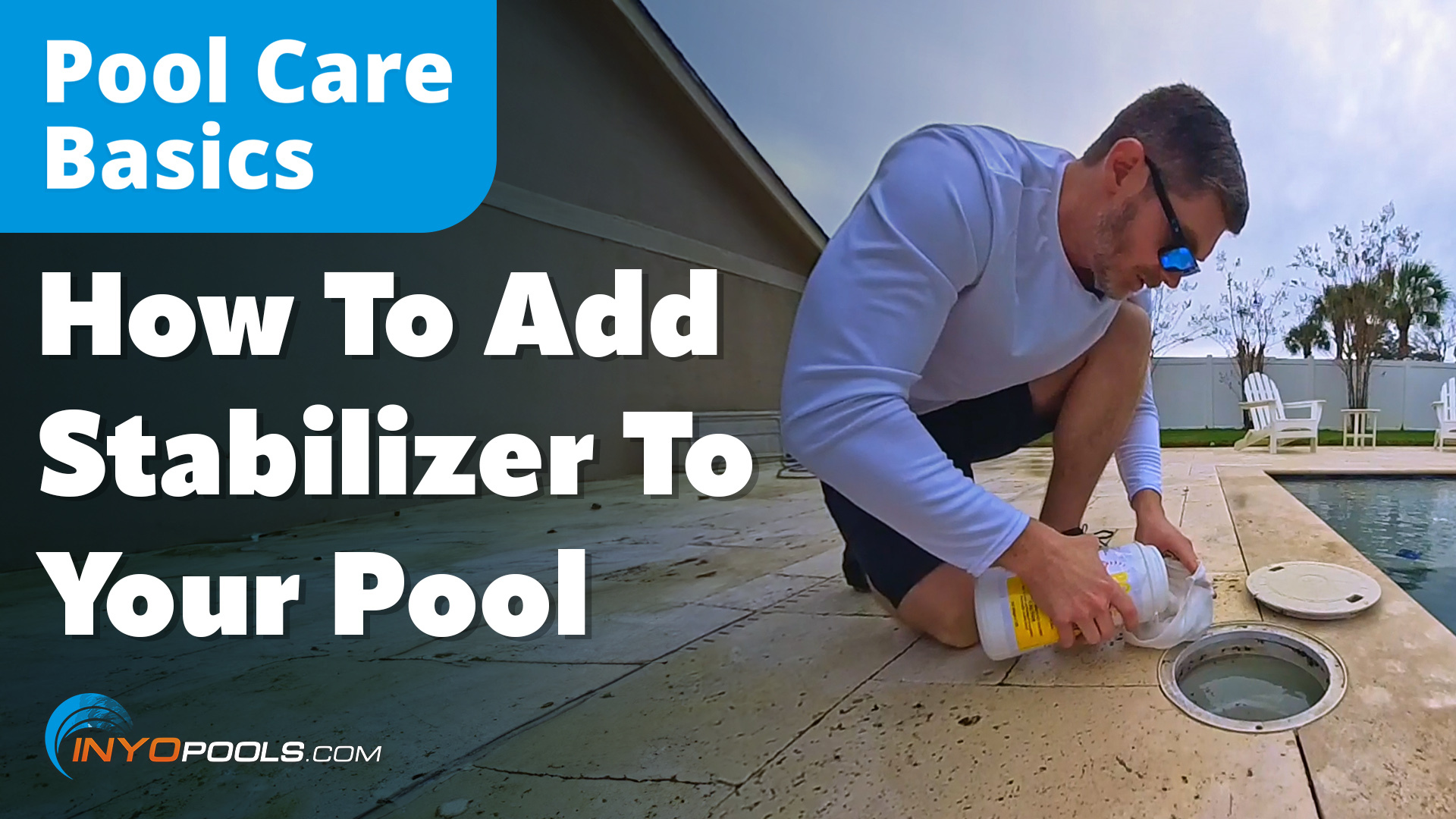
Pool stabilizer, also called pool conditioner or cyanuric acid (CYA), is key to maintaining healthy chlorine levels in your pool. This chlorine stabilizer protects chlorine from being rapidly depleted by UV rays, thus extending its effectiveness. Fellow pool geeks refer to pool stabilizer as “chlorine’s sunscreen” because it blocks the sun’s ultraviolet light (UV rays) from cooking off chlorine.
There are two forms of pool cyanuric acid: granules and liquid. Liquid CYA is the easiest to use but is much more expensive. Due to CYA granules being the more common form, we’ll be using it in our examples today.
- Liquid Cyanuric Acid
- Cyanuric Acid Granules
-
Liquid Cyanuric Acid -

Cyanuric Acid Granules
Signs Your CYA is Imbalanced
Low chlorine levels can be a symptom of imbalanced CYA levels, high and low. Low CYA levels mean your water is left unprotected against chlorine-zapping UV rays. Harmful bacteria like cryptosporidium and giardia will thrive in these conditions, creating a dangerous environment for swimmers.
High cyanuric acid levels in pool water create a problem called Chlorine Lock; this issue crops up when CYA levels are so high they inhibit chlorine from seeking and destroying bacteria and viruses.
Don’t wait for these signs of a CYA imbalance; testing your pool’s stabilizer level should be a regular part of your pool maintenance. To learn more about water testing, check out How To Test Pool Stabilizer (Cyanuric Acid)
The Right Way to Add Cyanuric Acid to a Pool

- Test cyanuric acid levels
- Calculate the necessary dose using the dosage recommendation on the bottle
- Fill a skim sock or stocking with a half dose
- Place the CYA bag in front of a pool return jet or in the skimmer basket
- Retest CYA levels after the stabilizer granules is completely dissolved
The best way to add CYA to your pool is similar to making a big teabag; fill a skimmer sock, an actual sock, or a nylon stocking with the desired amount of CYA, then let it steep in your skimmer or in front of a return jet for best results.
Adding pool stabilizer via a skimmer sock or stocking should likely take at least a few hours, depending on water temperature and water flow over the bag of CYA. The warmer the water, the quicker the CYA will dissolve.
To prevent a cyanuric acid overdose, we recommend adding the desired amount in stages. For example, if your CYA test results recommend a total dose of 4 pounds, consider doing an initial dose of two pounds, wait 24 to 48 hours before testing again, then adjust the dosage as needed.
Because CYA cannot be separated from the water once it’s in solution, it is best to measure twice and cut once. Using warm water to dissolve CYA more effectively can also help in achieving the desired concentration.
The Donts of Adding CYA to Your Pool
CYAs slow dilution rates make it not advisable to pour in a full dose of CYA granules directly into the pool. Adding stabilizer powder to your pool directly would result in it sitting on your pool floor, which could cause staining or discoloration to the pool surface, especially vinyl liners. If CYA levels are too high, the only effective way to reduce them is by partially draining the pool and refilling it with fresh water.
Don’t Pour Your Stabilizer Into Your Skimmer
Another common method of adding pool stabilizer is pouring it directly into the skimmer with the pump running. This method is better than letting it settle on the pool floor, but not by much. Again, because of CYA’s slow dilution rate, CYA granules may form clumps in your plumbing, which could cause blockages in the pool equipment or pipes.
CYA Slurry & a Bucket
Some pool owners create a slurry of pool water and CYA in a bucket, then add it to the pool. Not to sound like a broken record, but you can guess why this is not a great way to accomplish things; that’s right, dissolve rate. It could take several hours or even day(s) for the CYA to dissolve enough to be added to your pool.
Credit : Source Post








